Choosing between a digital and paper-based waitlist might seem like a small decision, but it's far from it. Your choice directly impacts customer satisfaction, staff efficiency, and even your restaurant's bottom line.
We live in an increasingly digital world, yet with so many restaurants seemingly noting down potential future customers in various notebooks, it might not be so evident that digital waitlists trump their paper-based counterparts.
So, how do you pick between the two?
This article aims to shed light on this very question. We'll explore the advantages and disadvantages of both waitlist types, helping you make an informed choice based on your restaurant's unique needs.
Ready to untangle this issue? Let’s dive into the digital pool first and explore digital waitlists.
Digital Restaurant Waitlist: Pros and Cons
In the bustling arena of the restaurant business, evolution is inevitable.
Technology has permeated every corner of our lives at a rapid pace, and the culinary world is no exception.
We've grown accustomed to seeing digital menus activated by QR codes, but what about digital waitlists?
A digital waitlist is essentially a software solution that helps efficiently optimize the flow of guests who are waiting for a table at a restaurant.
It's an electronic replacement to the old-school paper list method, offering certain benefits and integrated features to make your life a bit easier.
But are these digital tools all they're cracked up to be? Let’s dive deeper and evaluate the pros and cons of employing such systems.
The Pros
When you witness the culinary industry embracing technology at every turn, it's not a mere chance occurrence.
The attractiveness of these digital tools lies in their potential efficiency, agility, and accuracy, which is especially important when it comes to waitlist management.
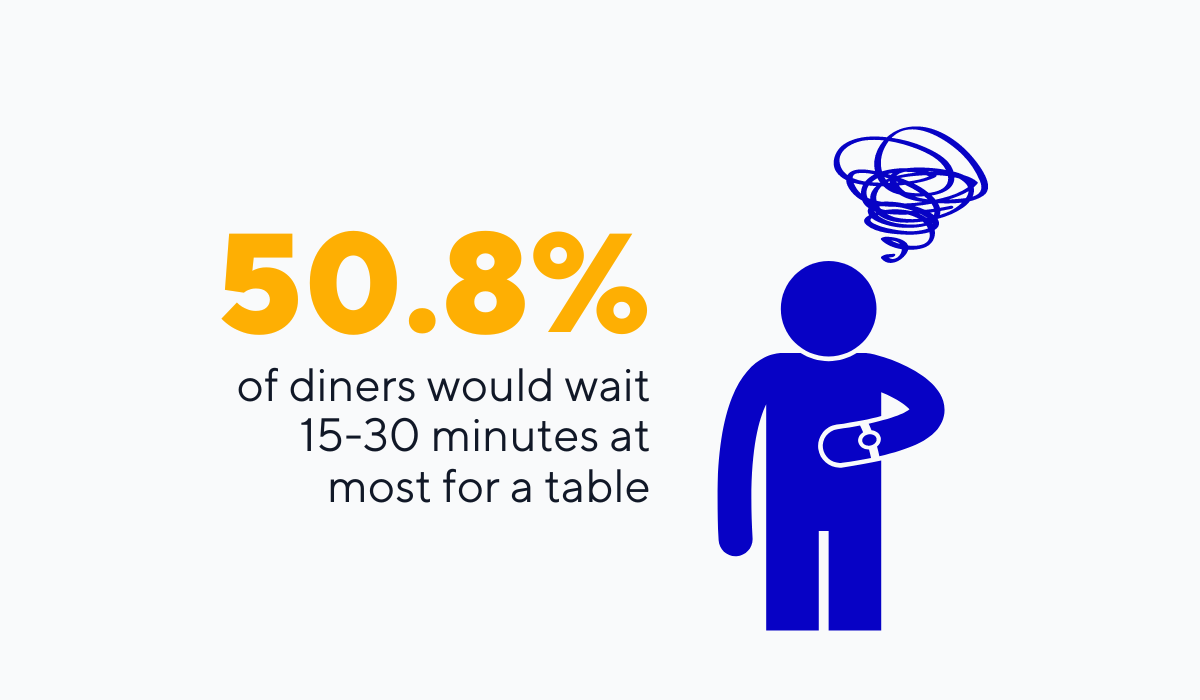
Illustration: Tablein / Data: Tasting Table
Survey data from the Tasting Table shows that diners no longer have the patience to stand endlessly in queues, waiting hours for a table.
Over half of them will give a restaurant 30 minutes at most to seat them, after which they will simply leave.
This need for efficiency is where digital waitlists take the stage. As they are usually cloud-based software solutions, they offer several benefits that speed up your operations.
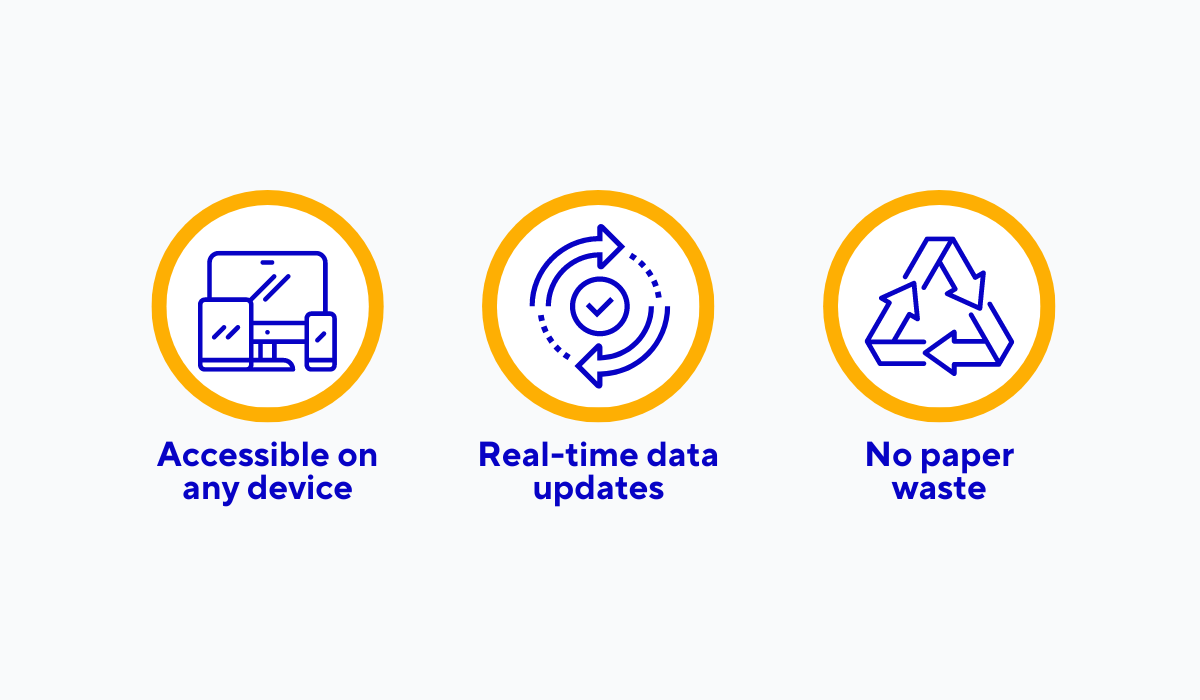
Source: Tablein
Digital waitlists can be accessed on any device, and any staff member, from the host to the server, can instantly update them in real time, increasing staff productivity by ensuring that information flows quickly and accurately.
It's not all about speed, either. Transitioning to digital means reducing the paper footprint, an eco-friendly move that is valuable in its own right.
And while saving paper, you get an array of features many of these tools offer that a waitlist pad simply can’t provide.
Say a group of tourists walks in without reservations, hoping for a table. After being added to a digital waitlist, they would be free to leave your restaurant and take a walk outside while waiting to be seated.

Source: Tablein
That’s right—they won't need to linger in your waiting area to know when their table is ready.
Top-notch waitlist software sends a quick text message like the one shown above to notify them as soon as their table becomes available.
No need for your staff to search for guests or make phone calls to inform them.
With such benefits at hand, it's clear that digital waitlists cater to the modern diner’s expectations while also enhancing your restaurant operations.
The Cons
However, while technology promises endless possibilities, adopting new solutions isn’t always a walk in the park.
One of the most significant points of tension in implementing a digital waitlist system—or any tech tool, for that matter—is staff adaptability.
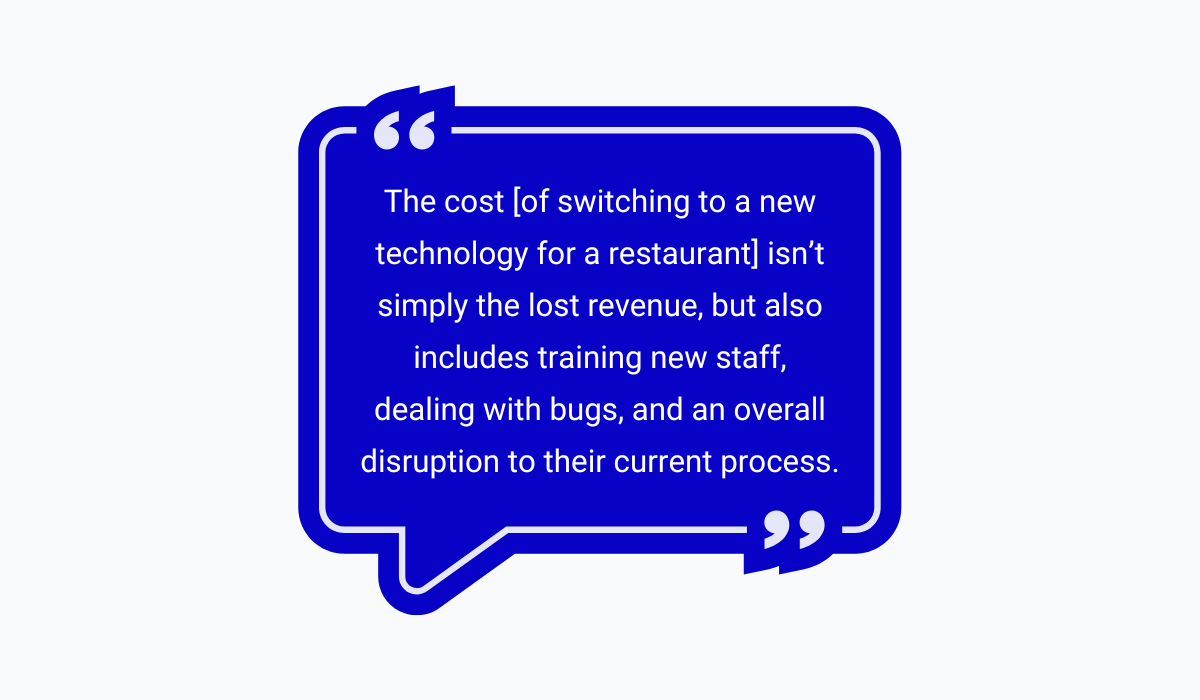
Illustration: Tablein / Data: Quora
As the quote from one Quora user shown above illustrates, integrating new technologies into a restaurant can be challenging.
Why? Since not all staff members are tech-savvy, the transition could actually slow down operations temporarily as everyone gets up to speed.
For this reason, it's paramount that if you do decide on a digital waitlist or a restaurant reservation solution with waitlist management features, this tool needs to be intuitive and easy to get the hang of.
After all, you don’t want an error screen like the one shown below appearing in the busiest period of your day.
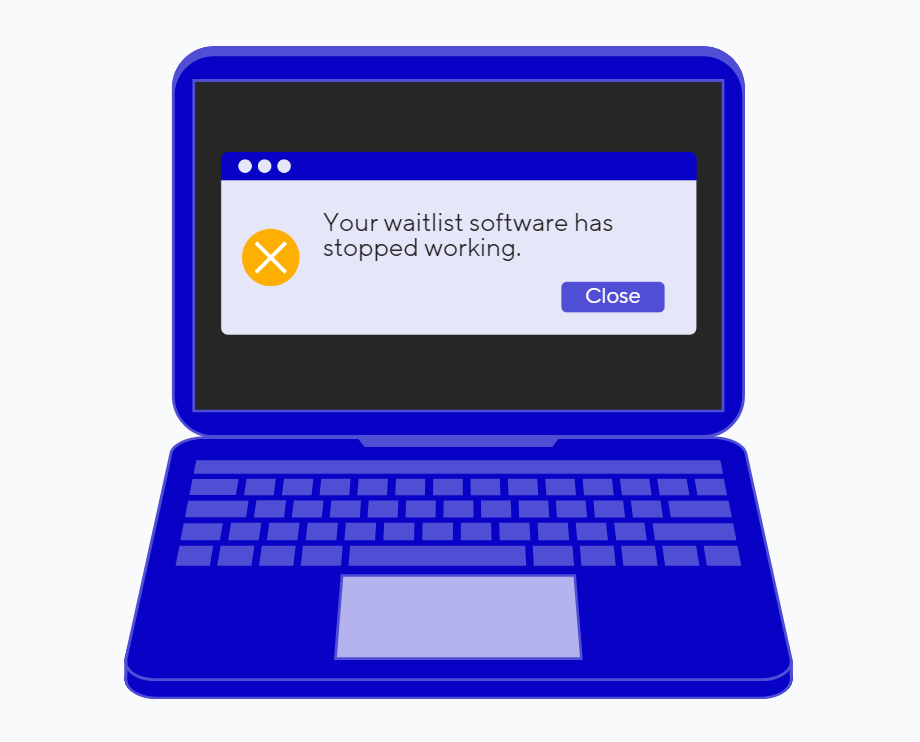
Source: Tablein
If such a scenario occurred, you would risk losing customers and damaging your restaurant’s reputation as frustrated guests would have to wait even longer for a table.
Some staff might even advocate returning to paper-based systems after an incident like this one.
Bugs, crashes, and downtime are huge downsides of digital tools that can disrupt your operations when you need these tools to work the most.
While these hurdles aren't insurmountable, they do require thoughtful consideration.
Paper-Based Restaurant Waitlist: Pros and Cons
Let’s now switch to the good old paper waitlist.
If you are a restaurant that handles walk-ins along with reservations, you are probably already familiar with what we are talking about.
Although, as we mentioned, this classic method of managing waitlists is slowly being usurped by more powerful digital solutions, that doesn't mean that paper-based waitlists are out of the running.
While they come with their share of drawbacks, which we'll delve into below, they also offer some undeniable advantages.
Let’s start with the positive sides.
The Pros
Sometimes, simplicity is all you need. And when it comes to restaurant operations, the paper waitlist is as simple as it gets.
A typical waitlist will look something like the image below.
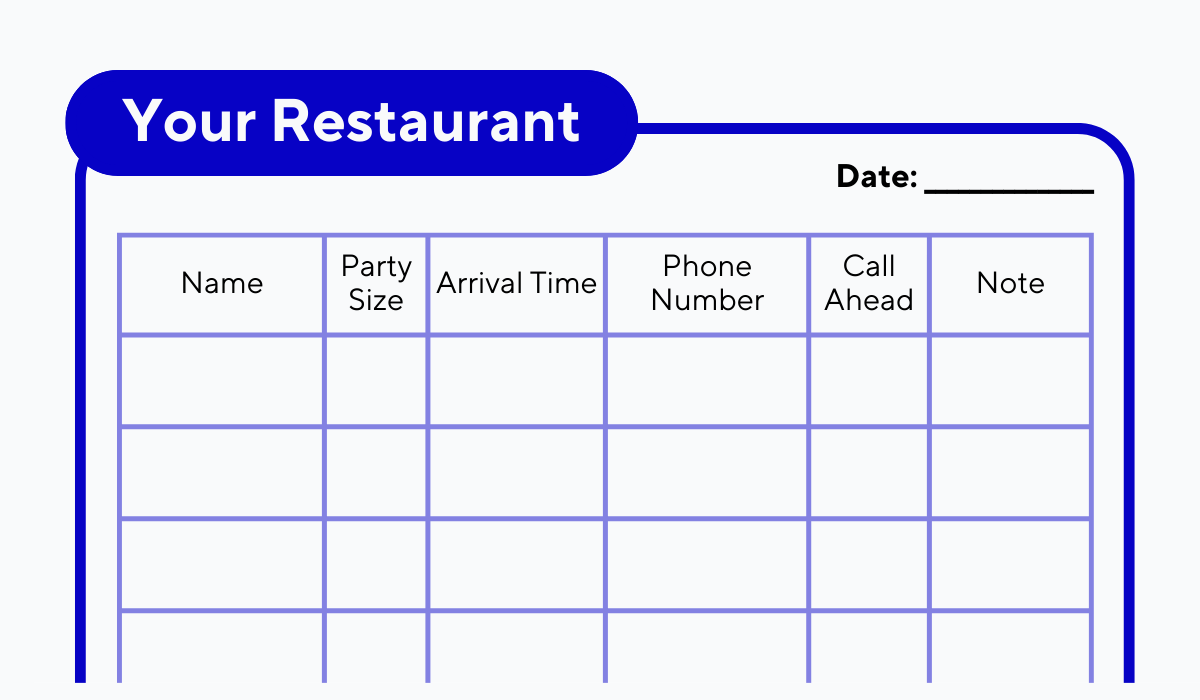
Source: Tablein
It’s a straightforward list with columns for key information your staff needs to capture, like the size of the party, its arrival time, and contact information, to name a few.
This uncomplicated approach is a paper waitlist’s most significant advantage, which gives it a few benefits shown below.
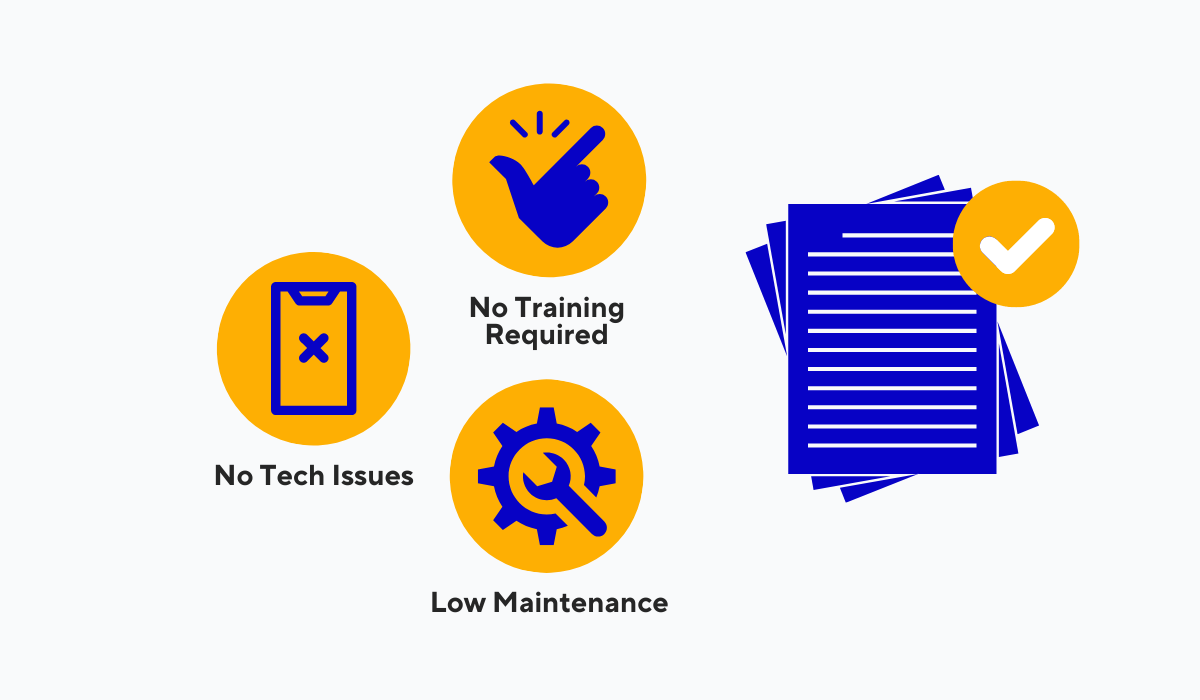
Source: Tablein
Training staff to use a paper waitlist is virtually unnecessary. Everyone knows how to use one, and no time needs to be spent navigating menus and learning to use complicated features.
Moreover, because they’re literally just paper, these waitlists are immune to the technical issues that can plague digital systems. And they are low maintenance as well—no software updates, no bugs, and no need to contact customer support if something goes wrong.
If your restaurant values simplicity, a paper-based waitlist might be the way to go. They’re easy to set up, straightforward to use, and free from the technical hitches that can complicate digital systems.
The Cons
However, as straightforward as paper waitlists might seem, they come with their own set of challenges that shouldn't be overlooked.
Let’s take a look at a typical waitlist pad used at restaurants.
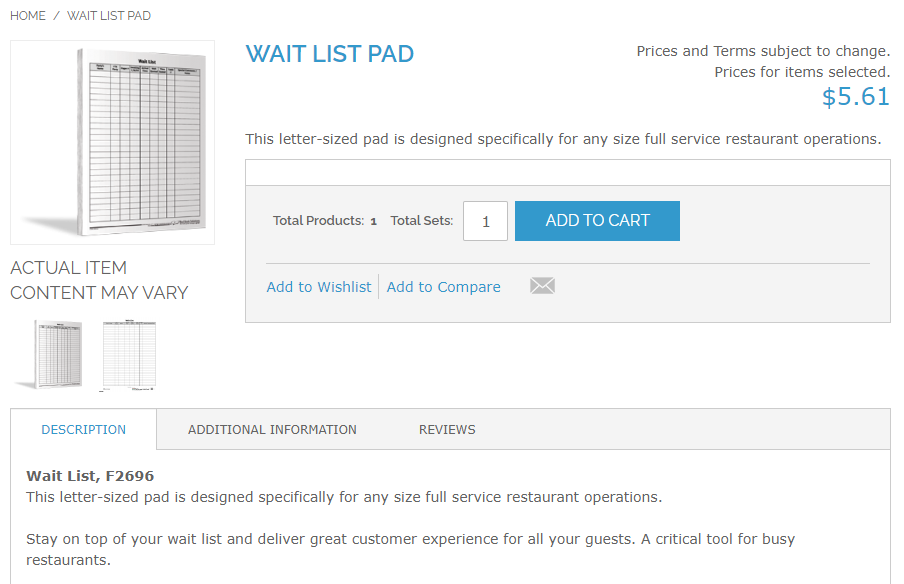
Source: Red Book Solutions
While seemingly inexpensive at first glance, the cost of paper, especially as prices continue to rise, can add up.
This doesn't even consider the environmental impact of paper waste, something that could be avoided entirely with a digital solution.
And consider how many of these pads you would use.
Even a medium-sized restaurant sees dozens of walk-ins each day. With limited writing space, you might burn through pads quickly, adding to both cost and waste.
The problems don’t end there. Paper waitlists are prone to human error, especially during rush hours.
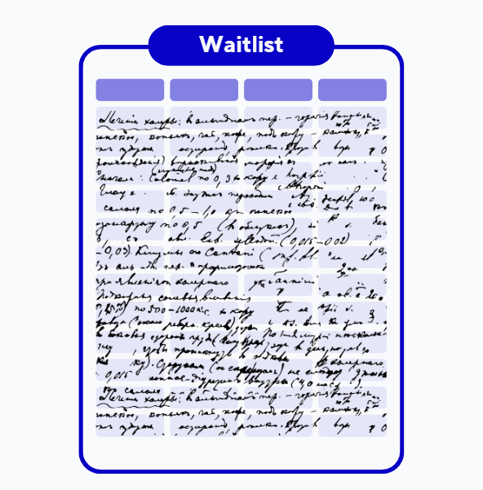
Source: Tablein
Look at the example above. Could you decipher the messy handwriting? While the image is an exaggeration, it’s still not far from how a waitlist pad may look during rush hours.
Deciphering these hastily written notes can be a daunting task.
Did the host note down the correct phone number? Is the party size accurate? Did they forget to jot down an important detail?
These questions can lead to mistakes, frustrated customers, and, ultimately, lost revenue.
As you can see, while paper waitlists are simple and straightforward, they're also limited in their capabilities and prone to human error.
The costs, both financial and environmental, can also accumulate over time.
Overall, these drawbacks make them a less optimal choice for restaurants aiming for efficiency and sustainability.
Digital or Paper-Based Restaurant Waitlist: Which Is Better
We've walked through the pros and cons of both digital and paper-based waitlists, and it's clear that each has its own set of benefits and limitations.
Traditional restaurants may prefer paper waitlists for simplicity and familiarity, even if it means longer wait times for guests and risking occasional errors.
But this comes at the cost of the efficiency and powerful features you get with a digital waitlist.
The main concern restaurateurs have while thinking about adopting a digital tool is the potential technical issues that can arise and the problem of convincing less tech-savvy staff to adopt the new system.
However, the game changes entirely when you opt for a state-of-the-art solution like Tablein.
Tablein isn't just a digital waitlist. It's a full-fledged reservation system designed for simplicity and ease of use and covers everything from managing reservations to streamlining waitlist operations.
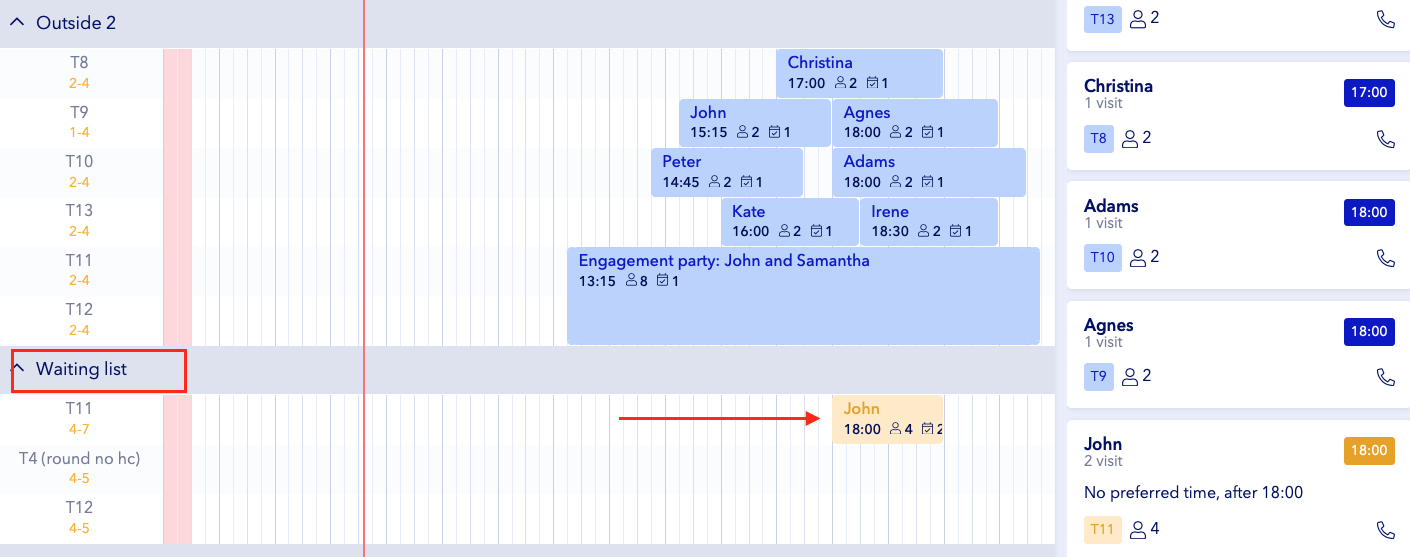
Source: Tablein
The image above showcases Tablein's intuitive waitlist feature. It combines the best of both worlds—the immediacy and familiarity of a paper waitlist with the efficiency and feature-rich environment of a digital tool.
Any party that comes through your doors can be quickly added to the list, which is right alongside the section for reserved tables.
With this information, staff can quickly inform guests of their potential wait times by looking at when a table will potentially be freed up.
And the beauty of it? Your staff won't need extensive training to get up and running and will be ready to use Tablein’s powerful waitlist management features, like text notifications, in no time.
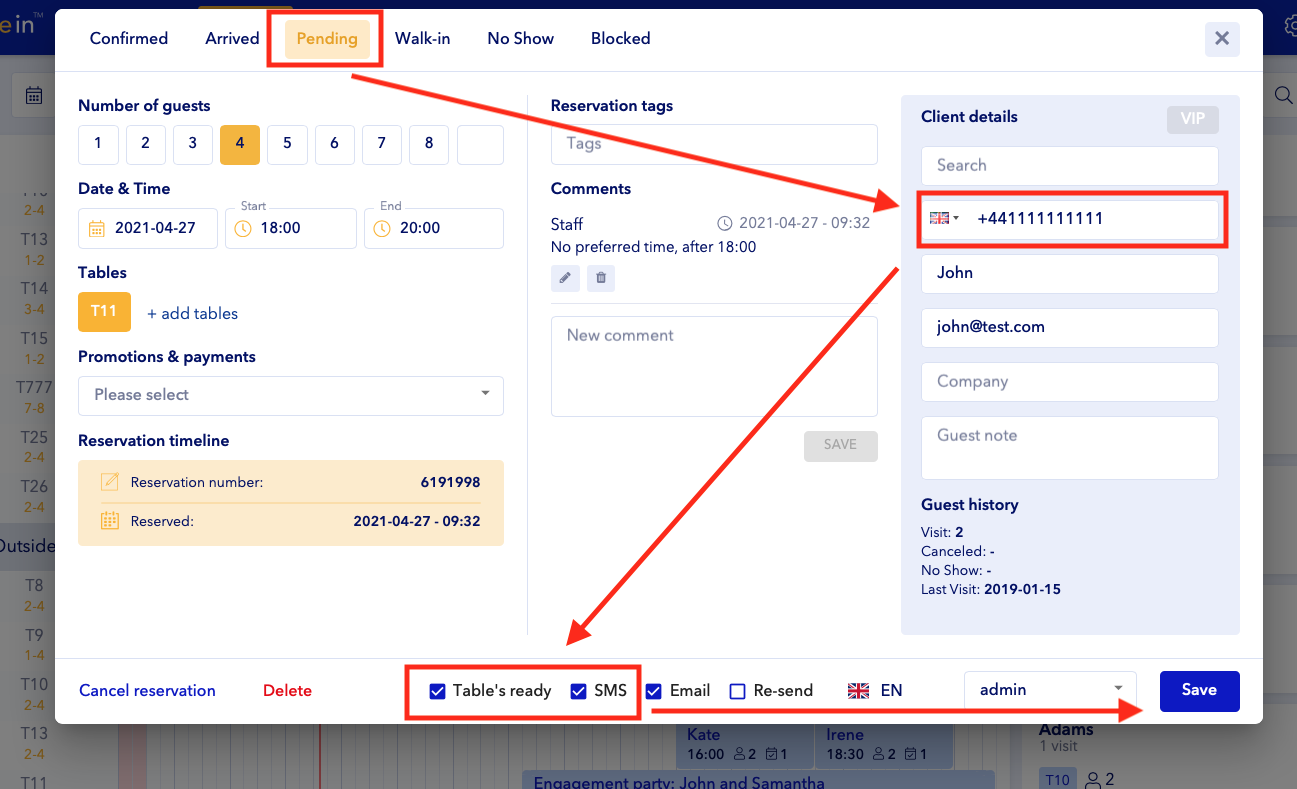
Source: Tablein
As the image above shows, a few mouse clicks or taps on any mobile device are all it takes to send an SMS message that tells guests on your waitlist that their table is ready for them.
Just input a phone number, tick a few boxes, and that’s it.
In the end, the choice between digital and paper-based waitlists comes down to what you prioritize for your restaurant.
However, when you opt for a comprehensive, intuitive solution like Tablein, that choice becomes a no-brainer.
Conclusion
And there you have it. We've unpacked the ins and outs of digital and paper-based restaurant waitlists.
Whether you’re looking for the efficiency and the additional features of digital waitlists or prefer the old-school pen-and-paper approach, each method has its own set of advantages and disadvantages.
What's important is aligning your choice with your restaurant's specific needs and goals.
The bottom line is that your choice between digital and paper waitlists is a strategic move that can shape your restaurant's operational efficiency and customer satisfaction for years to come.
So, weigh the pros and cons and choose wisely—your choice is more impactful than you think.
Get a 30-day Exclusive Trial
As a Tablein blog reader, you’re eligible for an exclusive 30-day free trial to experience our simple reservation solution for your restaurant.
Enter your business email, and we’ll send you all the steps needed to create your account.
Share this
You may also like
